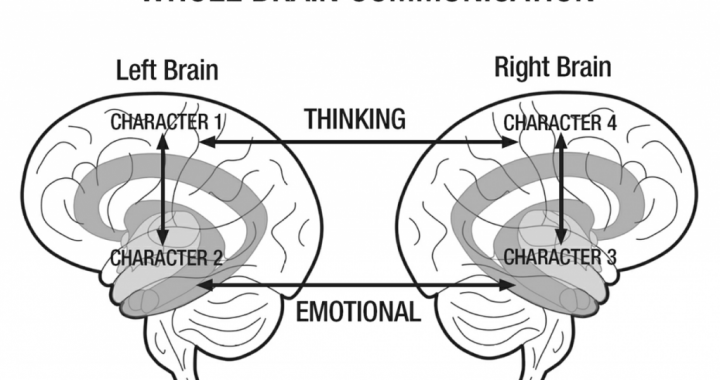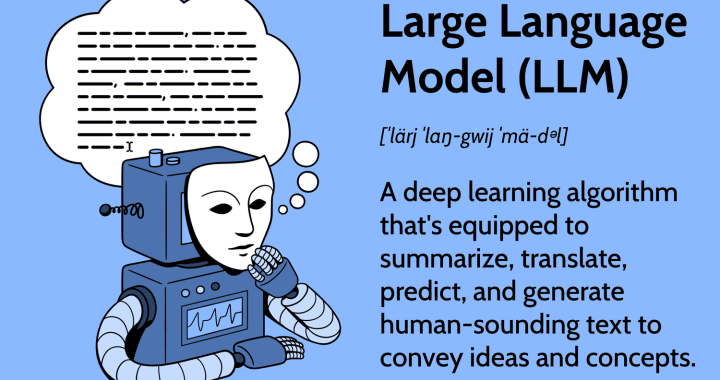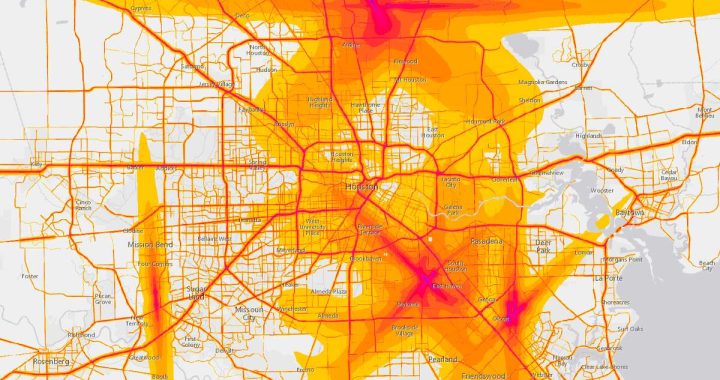On my desk sits a copy of Jill Bolte Taylor’s sequel to her incredible true story, Stroke of Insight. The second book is called Whole Brain Living, and it aims to pick up where the neuroscientist left off. Offering the moral lesson.
Picture a successful Harvard professor, a leader in the field of neuroscience, who one day loses half of her brain. There’s a TED talk about it. And a great book, which recounts the traumatic event as well as her recovery. Sidebar, most of our knowledge about the brain stems from freak accidents. The word hemisphere for the brain, according to my middle school math teacher, comes from bronze-aged soldiers bashing an enemy’s head, looking inside, and figuring, “Hey, there must be a whole round organ in there.”
Thanks to physicians, who I imagine must dice up patients like garlic cloves, we know that the brain is not spherical at all. Moreover, as the surgeries of Dr Roger Sperry proved, our brains are a tad more complicated than semi-hemi-spheres. For example: after severing the connection, known as the corpus callosum, between the left and right brain, some remarkable discoveries were had. Turns out different parts of our brain have conflicting motivations and behaviors. One patient without his corpus callosum, for example, attempted to strike his wife with one hand, but stopped himself with the other.
In her sequel, Taylor offers us a guide on coordinating the different regions of ourselves. All based on hard science. So far in my reading, she recalls the classic left-brain, right-brain distinction. But then further divides those, to create four sections of the brain. Or four characters.
Left-thinking, Character 1.
Left-feeling, Character 2.
Right-feeling, Character 3.
Right-thinking, Character 4.
I won’t go into detail (just buy the book, or ask to borrow my copy) except to say Taylor numbered these with a purpose. If you are rolling your eyes, do not fret. I had postponed reading this book myself, for months. I only got into it because the book was a gift from a person I really care about. Yet, having promised myself I would get around to it before the new year, here I am. Perusing its opening pages, and clutching at my breast, cringe after cringe. First, Taylor expounds a glittering preamble, in which she establishes herself as a most credible source. Yawn. Next she rehashes the glory of her first book. Snooze. And then, before even entering chapter 1, she relishes in a buffet of undressed word salads, on and on about how this book will change your life. One Oprah name drop, included.
I was ready to drop the book itself. But, as anyone who is into psychology knows, perhaps my predator detection system had been triggered. Along with my jealousy and envy. At any rate, I plowed through, from that moral obligation to tell my gift-giver that I had AT LEAST given the first 50 pages a try. Lo and behold! Taylor starts comparing her insights to two of my favorite authors: Joseph Campbell and Carl Jung.
So, we return to the numbers of the characters: our Hero’s Journey is from Character 1 – 4. Meanwhile each of them corresponds to a Jungian Archetype. I won’t spoil those connections either; not even to mention that I disagree with the comparison she draws. Nevertheless, Dr Taylor, you have my attention.
Getting to Know Your Character 1
We have the left-thinking quadrant of our brain, mostly prefrontal tissue, concerned with dividing everything, including our internal and external world. Think the first sentence of the Old Testament. At any rate, motivating me to create a blog post is this exercise sheet Taylor throws into her book. She provides the questions, I’ll dally some answers. All in the name of understanding myself, the brain, and whathaveyou a little better. Maybe it inspires you to answer the questions for yourself.
1. Do you recognize your Character 1? Pause for a moment and imagine yourself doing Character 1 tasks whereby you are creating order. Picture yourself in your office or planning an event, or organizing things in your home.
My Character 1 believes in externalizing the thoughts in my head. It’s what got me off the couch, excited about the prospect of sharing what is going on inside. Not only this, but it is what tells me what sentences should go where. When to put a period. When to write choppy, for effect. It is the voice in my head, reminding me to reread this post. But even before the post, it was the part of me which discerned text from space, even the subtext, while reading the Taylor book. She explains that when her brain hemorrhaged, and her left-side shut down, she could not even understand speech or read. Her language center had shut down. So, alas, do I recognize my Character 1? Yes! It’s the voice inside my head. Shouting, whispering words. Pleading, demanding action. Noticing which forks are for dinner and which forks are for dessert.
2. What does Character 1 feel like inside of your body? Do you feel relaxed or excited when you are busy tending to details? Do you stand differently, or does your voice change?
Since I am editing books now as part of my research assistantship, I am Mon-Fri tending to details. Details have always excited me. Right from wrong has always attracted me. I am constant and vigilant when I put my mind to it, and take pride in this when I do well — a swelling of the chest. When I don’t pay attention, I beat myself up — shrink or hunch my shoulders. If I say something witty or funny, or I make a connection for the people around me, about the things around us, my face feels hot and my insides turn bright. When I am in the zone, writing, thinking, reorganizing my Outlook calendar, then all hunger dissipates, my stomach tightens, and my eyes burn against the shining of the computer monitor.
3. What if you don’t recognize this part of yourself?
I do believe I recognize it. The problem occurs when it fails me. I hate not thinking of something funny, relevant, or useful to say in social settings. So much at work as at a bar. I do not recognize myself when I say something incoherent. Note: a least once a day, I say something incoherent. Meanwhile I almost always think something whimsical. It is in those common moments that I ignore who I think I want to be. And that’s Character 1, from my understanding: who I think I want to be. The Persona, as Jung used to say, Taylor reminds us.
4. Assuming you can identify your Left Thinking Character 1, how much of the time do you let this character run your life, and under what circumstances?
I was so embarrassed a few months ago when a workshop professor asked the class to “free write.” I was like, “Sweet” and proceeded to write about all the things I had to do that day and the next. My turn came up. And I was so shaken by her analysis. “Wow, the repetitive nature of reality, a voice trapped by the mundane.” I immediately wished I had written something less about brushing my teeth and more about the beauty of, I don’t know, a tissue box. (Maybe my Persona was eager to dress me as the efficient young man; until socially that ended up being the wrong mask to wear, at a literary workshop.) I continued reading this book BECAUSE of my Character 1, the voice reminding me it was a gift. Otherwise I’d have trashed it.
5. As you think about your Left Thinking Character 1, can you come up with an appropriate name for it?
Hah, Taylor recommends we name our four characters. I immediately drew connections to the four characters I want to write about in my next book, but found it difficult to name my own, to broach the subject. Nonetheless, here it goes. I want a prospecting, business-minded, cunning name. A kingly name, judging right from wrong. Charles, it is.
6. Who are some of the Character 1s in other people over the course of your life who have influenced you, in positive or negative ways? Was your Character 1 emboldened by their Character 1, or repressed?
Let’s call him Jack, my closest friend and the culinary entrepreneur, came to mind often when reading about Character 1. Analytical and critical. His way of being used to annoy me, but later I learned to appreciate it. So a combination of positive and negative. Or emboldening me to emulate his strengths, such as honesty, responsibility, and pride. But also to repress the same urge in myself, when it feels weak to judge or criticize another too harshly.
7. Who in your life appreciates, cares for, identifies with, and wants to hang out with your Character 1? What are those relationships like?
My wife appreciates when I do the thinking and the errand-ing and the calling and the business-ing of our household. I take it my supervisor appreciates my work ethic. And I have not met anyone who wanted to hang out with me and couldn’t. And since I’m pretty conscious of what I’m putting out there, I am grateful my character 1 is likeable and approachable to almost everybody.
8. Who in your life does not get along with your Character 1?
She’s not always like this, but a close lady friend of mine once opened my eyes to how logical and word-based I was. She was explaining something in a roundabout way. But when I pressed her to clarify, she lashed out, saying I was missing the point. We’re chill though. But still, I would add anyone who avoids me, or who long ago made up their mind about me without ever considering what I had to say, must have judged my Character 1 as uninteresting, valueless, or a threat?
9. What kind of parent, partner, or friend is your Character 1?
I am at all times trying to put my best foot forward. Be a team player. Listen to others. And reach some sort of mutual, shared understanding ABOUT REALITY or anything. If what I have to say is ignored, then I shrug it off and move on at best. At worst I never let it go, and continue to harbor the same warped view of the situation, all because the other party withheld his or her side of the story.
10. How kind is the relationship inside your head between your Character 1 and your other characters?
Rocking. I made an impulse purchase yesterday. But negotiated with myself this afternoon, trading any feelings of remorse with the commitment to uphold some other values. If you notice that sounds abstract, then pat yourself on the back. I’m over this post!





Pingback: Reflections on Whole Brain Living: Getting to Know Your Character 2 - Iván Brave
Pingback: Reflections on Whole Brain Living: Getting to Know Your Character 3 - Iván Brave
Pingback: Reflections on Whole Brain Living: Getting to Know your Character 4 - Iván Brave
This book sounds pretty interesting. Have you thought about how character 1 (in extremes) could go towards rigidity, controlling behaviors, harsh criticism / punishments, obsessed with being productive but described by society as “driven”….
hmm. Might be fun to take these archetypes and consider how they could play out in a pathological context. Just for the sake of better understanding future characters. For character 1, could be obsessive-compulsive when at low-levels of functioning. Either OCD or OCPD, but your reflection speaks more to OCPD so ill give ya this:
becomes pretty easy to pinpoint what motivates this person (has a perfectionistic mindset), what makes them angry (a non-controlled, perhaps chaotic environment), what keeps them stuck (self-perceived flaws + imperfections = deep shame), what scares them the most (being seen as evil / bad, conflict is terrifying unless emotions are left out), who they attract in love (bipolar, borderlines), how they are with money (miserly, the type to criticize the gifts they receive right in front of the gifter’s hurt facial expression or argue down to the last cent over how much to tip the delivery dude), what makes them feel regulated (schedules, lists on lists on lists, toilet paper roll facing the RIGHT way, furniture that’s perfectly flush to the wall), their body image issues (overly conscientious about fitness, health, ingredients in food), what substances they get addicted to (none. they are so over-controlled and therefore may not understand why other folks would be so undercontrolled). OCPD is mostly genetic so now you can bring in the family dynamics. Most people are either born over-controlled with their emotions or under-controlled with their emotions. So for example, OCPD dad (overcontrolled) + BPD mom (undercontrolled) = children who have no idea how to meet their own emotional needs >> insecure attachment styles. Also, secure attachment styles must be earned dawg. nobody is born with a secure attachment style… we have not achieved that yet as a global society. Everyone has been thru trauma ESPECIALLY if you were born in the 90s or before. Something to consider.
I think framing characters from a pathological or mental health lense would serve to support your own decisions throughout the character development process. Its a FUN process this way! But try telling character 1 that.. cough cough. I mean David.
Dear Baron,
Thank you for sharing your reflections here. You gave me much to think about. For example, the way our characters are the result of (or reactions to) genetics. Of course! Yet the way you drew parallels between OCD children and parents was accurate, imo. (Speaking from personal experience!)
I even confess to a handful of the Character 1 flaws you listed. But I’d like to think that those flaws, like any, are the result of fulfilling needs. Aka, that those “flaws” can serve a very real purpose. Lists, for example, are sometimes useful. Controlling is sometimes useful. Criticizing is sometimes helpful, especially when the purpose is to improve and be constructive. Not to mention, we have all been scammed before: so to argue politely yet firmly with the delivery dude or a restaurant owner who charged you for an extra meal that isn’t even in the bag makes sense from time to time.
It is all about balance, Dr Taylor’s main idea.
Btw, have you finished the book? A few of the traits you attribute to Character 1 may fall under Character 2 (the emotional version of Character 1). Something to consider.
To end, I would just like to say thank you again for sharing your thoughts. This whole four-brain concept is nice, but surely just a metaphor. The point is to be ourselves 100% and to not let any one personality quirk rule our lives.
Have a great weekend!
Sincerely,
Iván
OCPD is different from OCD, but that’s not the point. Characters could be pathologically extreme no matter which archetype you work from, right? And in today’s world, people are becoming more and more aware of the mind + body connection, trauma recovery, and family dynamics. So characters with mal-adaptive ways of being = more ReLaTabLe now than ever. Your last book had that element of trauma in it (mother wound / abandonment) which had me hooked from the start. And the mystery around illya’s trauma is what kept me hooked. The enneagram is another great way to get ideas for a character’s overall worldview which is useful. I took the test for myself and would say its pretty reliable. Ex: OCPD would go with enneagram #1 while bipolar / BPD would fall into #4 or #6. It also gives you a general idea of how each personality (9 total) functions within varying levels of stress. Something to consider XD But ya I’ll for sure read this whole brain book in depth when i get a chance. Until then, happy writing bro!
Such happy writing! It’s been two freaking years and I’m just now going through these old posts. How did I miss your follow up?
Anyway, I’m touch that you enjoyed the troubled DJ story. And I’m curious if you ever got around to wringing this Bolte Taylor book.
Also, funny you mention the enneagram — my sister had all the siblings take the take, but years ago. I don’t even remember the result. ENFJ for life though, that I do remember.
Keep up the good insta acct, you’re an inspiration, Baron! Cheers